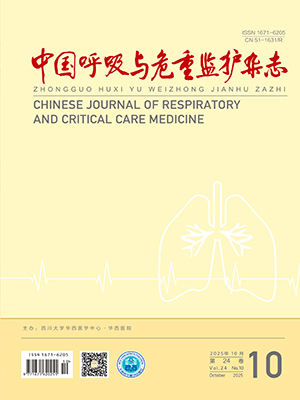Objective To construct, validate and evaluate a nomogram prediction model based on triglyceride-glucose index for predicting the risk of type 2 diabetes mellitus (T2DM) in patients with obstructive sleep apnea (OSA). Methods A total of 414 patients diagnosed with OSA who were hospitalized in the Second Affiliated Hospital of Kunming Medical University from July 2013 to July 2023 were retrospectively analyzed. They were randomly divided into training set (n=289) and validation set (n=125) at a ratio of 7:3 using R software. In the training set, univariate logistic regression, best subsets regression (BSR) and multivariate Logistic regression were used to determine the independent predictors of OSA combined with T2DM and construct a nomogram. The area under the receiver operating characteristic curve (AUC), calibration curve, Hosmer-Lemeshow goodness of fit test, decision curve analysis (DCA) and clinical impact curve (CIC) were used to evaluate the discrimination, calibration and clinical applicability of the nomogram prediction model. Finally, the internal validation of the nomogram prediction model was carried out on the validation set. Results In the training set, the results of univariate logistic regression, BSR and multivariate logistic regression analysis showed that hypertension (OR=2.413, 95%CI 1.276-4.563, P=0.007), apnea hypopnea index (OR=1.034, 95%CI 1.014-1.053, P=0.001), triglyceride-glucose index( OR=12.065, 95%CI 5.735-25.379, P<0.001), triglyceride/high density lipoprotein cholesterol (OR=0.736, 95%CI 0.634-0.855, P<0.001) were independent predictors of T2DM in OSA patients. A nomogram prediction model was constructed based on the above four predictors. In the training set and validation set, the AUC, sensitivity, and specificity of the nomogram prediction model for predicting the risk of T2DM in OSA patients were 0.820 (95%CI 0.771-0.869), 75.7%, 75.9% and 0.778 (95%CI 0.696-0.861), 74.5%, 73.0%, respectively, indicating that the nomogram had good discrimination. The calibration curve showed that the nomogram had a good calibration for predicting T2DM in OSA patients. DCA and CIC also showed that the nomogram prediction model had certain clinical utility. Conclusions A simple, fast and effective nomogram prediction model with good discrimination, calibration and clinical applicability was successfully constructed, validated and evaluated. It can be used to predict the risk of T2DM in OSA patients and help clinicians to identify patients with high risk of T2DM in OSA patients.
Citation:
HONG Xueling, LI Yongxia. A nomogram prediction model for predicting the risk of type 2 diabetes mellitus in patients with obstructive sleep apnea based on triglyceride-glucose index. Chinese Journal of Respiratory and Critical Care Medicine, 2025, 24(7): 489-498. doi: 10.7507/1671-6205.202409084
Copy
Copyright © the editorial department of Chinese Journal of Respiratory and Critical Care Medicine of West China Medical Publisher. All rights reserved
| 1. |
|
| 2. |
|
| 3. |
|
| 4. |
|
| 5. |
|
| 6. |
|
| 7. |
|
| 8. |
|
| 9. |
|
| 10. |
|
| 11. |
|
| 12. |
Zeng Y, Zhao J, Zhang J, et al. Development of a Nomogram That predicts the risk of coronary heart disease in patients with hyperlipidemia. J Cardiovasc Pharmacol Ther, 2023, 28: 107424842311677.
|
| 13. |
|
| 14. |
|
| 15. |
|
| 16. |
|
| 17. |
|
| 18. |
|
| 19. |
|
| 20. |
|
| 21. |
|
| 22. |
|
| 23. |
|
| 24. |
|
| 25. |
|
| 26. |
|
| 27. |
|
| 28. |
|
| 29. |
|
| 30. |
|
| 31. |
|
| 32. |
|
| 33. |
|
| 34. |
|
| 35. |
|
| 36. |
|
| 37. |
|
| 38. |
|
- 1.
- 2.
- 3.
- 4.
- 5.
- 6.
- 7.
- 8.
- 9.
- 10.
- 11.
- 12. Zeng Y, Zhao J, Zhang J, et al. Development of a Nomogram That predicts the risk of coronary heart disease in patients with hyperlipidemia. J Cardiovasc Pharmacol Ther, 2023, 28: 107424842311677.
- 13.
- 14.
- 15.
- 16.
- 17.
- 18.
- 19.
- 20.
- 21.
- 22.
- 23.
- 24.
- 25.
- 26.
- 27.
- 28.
- 29.
- 30.
- 31.
- 32.
- 33.
- 34.
- 35.
- 36.
- 37.
- 38.




